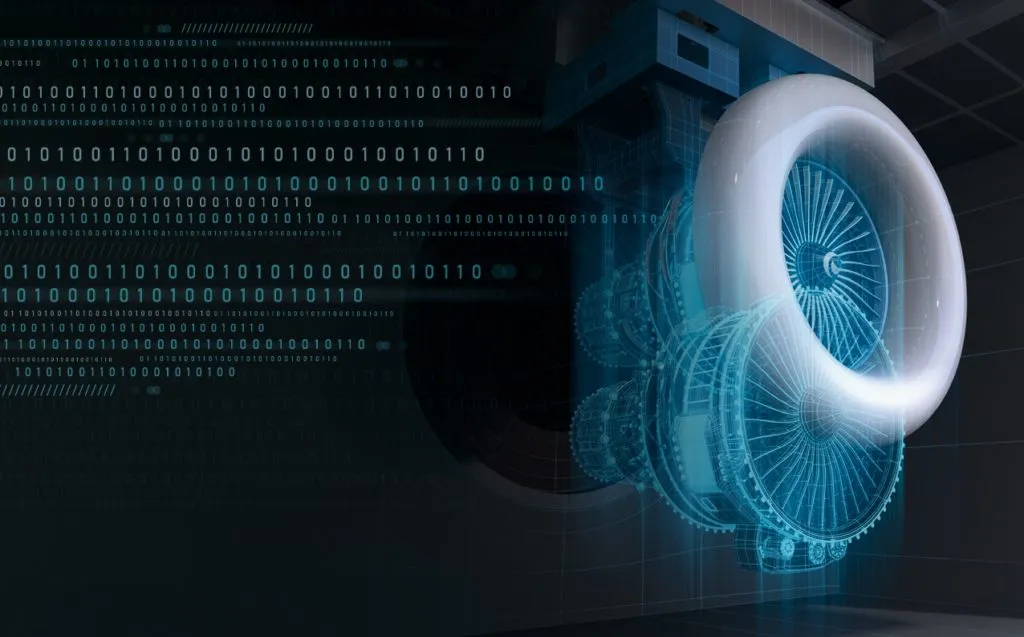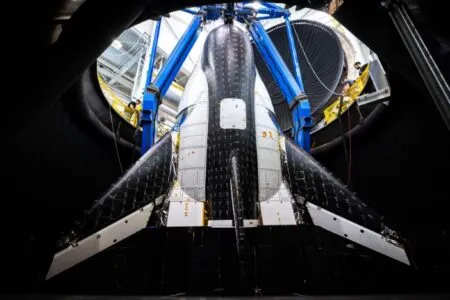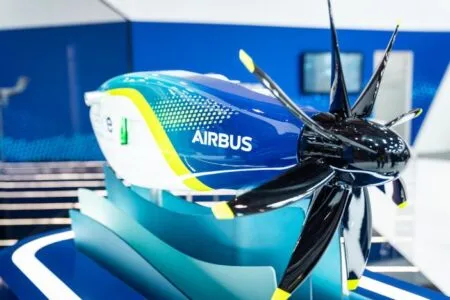At their core digital twins and threads are about storing digital geometric-based CAD models alongside data points that relate to the model’s physical properties and behavior. For this reason, all digital twins must have a physical twin, which must have been or is being accurately measured.
Franz Hemli, R&D director at optical measurement company Bruker Alicona says, “We have a digital twin of the measurement instrument itself and if we have the CAD model of the part we are measuring, then we can integrate the data with the model to create a more accurate digital twin.”
Lee Griffiths, head of business development – aerospace at industrial metrology company Zeiss says,
“In the optical world the digital twin is fundamental. It is a digital replica of what we have measured and we
strap to it the inspection plan, the measurements, then feed it back in to do reverse engineering and all manner of things.”
Aziz Tahiri, vice president of global aerospace and defence at measurement company Hexagon says, “Developing a digital twin starts with metrology. Most people already have the measurement equipment and data for inspection and certification purposes.
“Typically, about 90% of an aircraft has been touched by our software or metrology hardware at some point – we are present in most aerospace factories. Airbus for example has more than 600 of our laser trackers and thousands of our software licences,” says Tahiri.
Aerospace OEMs often use metrology equipment for quality control at the end of manufacturing processes to measure that a piece has been manufactured to the right dimensions or to aid assembly. But the same metrology data can be used to develop digital twins, expanding the data’s utility and increasing the value that can be extracted from metrology equipment at minimal cost.
“With a digital twin the next product can be slightly better. We can assess if it is in tolerance easier, by comparing a manufactured part to the original CAD model. You can create a feedback loop to create manufacturing processes and set up alarms which trigger automatically if for example, something is a few millimeters out of tolerance,” says Tahiri. “This enables functions like virtual assembly, which helps you to identify problems before costly and time-consuming mistakes are made.”
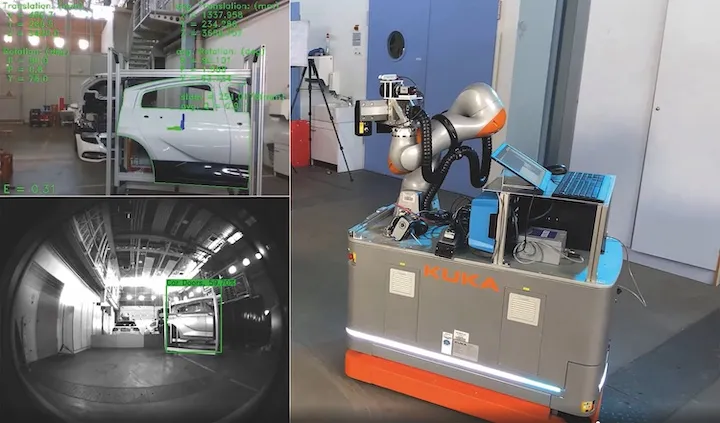
Virtual assembly is a pre-operation check of a joining process – for example fixing a wing on an aircraft. These complex operations with large and heavy parts can last several hours. Although parts have been manufactured to be in tolerance, problems often occur during assembly that make disassembly, rework and re-assembly necessary.
“By simulating the assembly process with a digital twin using the actual real geometry of the parts, you can remedy problems before they occur and prevent costly delays. If parts don’t fit you can remesh, manufacture a shimmy or joining plates so you can ensure it fits first time,” says Tahiri.
According to Tahiri, digital twin techniques such as virtual assembly can decrease part wastage by up to 50% and potentially save hundreds of man hours. Data from metrology can also be used to improve component designs. This is achieved by linking up disparate parts of the design, manufacture and test process and sharing data via the Cloud, something Hexagon facilitates through its Nexus platform.
Industry trend
Almost all aerospace companies are attempting to digitize processes and environments in some way, believes Tahiri. “Some have tried and failed to implement digital twins, a few have succeeded. But everybody wants to use them because if you are not you are not optimizing you are losing a lot of value,” says Tahiri.
Guy Johns, chief technologist from digital engineering consultancy CFMS (Center For Modelling and Simulation) agrees that digital twinning is a hot topic. However, he believes it is a repackaging of CAD modeling and computer simulation capabilities from design engineering.
“Testing is an area that hasn’t traditionally used modeling and simulation, but we are seeing traction and benefits in the test domain, especially for aerospace,” says Johns. “But going digital is a real shift for many companies. There are strict certification requirements in aviation and large amounts of legacy data. Companies like Rolls Royce have a 100 years of physical test data.”
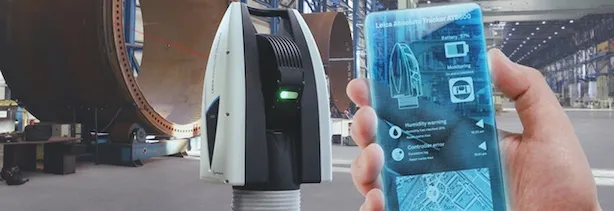
The potential to reduce the amount of physical testing to cut costs and time-to-market is tantalizing for aviation companies. Whereas in the past virtual models and simulations were not sufficiently accurate to meet aerospace standards, the latest digital threads and twin concepts claim the virtual world can host an exact representation of a product.
The increase in model accuracy has been enabled by several things, including an increase in availability and cheaper computing power and data storage. Metrology equipment able to capture an accurate representation of a product has become cheaper and more accessible, while robotics and automation, such as drones and unmanned ground vehicles have made it possible to capture data and model large finished products, such as aircraft or even buildings, with a high metric accuracy. This enables engineers to develop digital twins that represent real world products more easily and accurately, instead of basing them on the original CAD models.
Mark Woods, chief strategy officer at CFMS says, “It is worth remembering that there isn’t just one digital twin in the testing process. They have different levels of fidelity.
“You might rule out using a digital twin because it is not representative enough of the real world. But the real question is whether you are applying it at the right time. It could be that a digital twin can help you early in the testing process and then its use evolves tactically as a program matures.
“The key is to ensure you have the right requirements for the digital twin that are appropriate for the
testing phase.”
Different levels of abstraction are possible with a twin and understanding the level of detail needed to meet a test’s requirements is vital. “This is where expertise comes in,” says Woods. “You must ensure you have the right requirements for the digital twin and to be able to say that the model is appropriate. It’s experience and expertise that gives you the confidence to remove a physical test.”
A relationship between the staff developing the digital twin and the experienced test engineer is therefore important where you are looking to optimize and minimize physical testing. Only the test engineer can provide guidance on where appropriate and best to use digital models and simulation. For example, within aerospace NDT expertise gained over many years is often required to set up and configure equipment, locate sensors and make calibrations. A simulation can be created to enable non-experts to setup equipment, freeing up the time of the experienced engineer to do more testing.
“We’ve seen from other industries like oil and gas that you get the most value from digital twins by using them to capture knowledge. It means that when someone retires, knowledge doesn’t leave the company. Instead it is retained and becomes available throughout the entire business,” says Woods.
Right first time
Aviation’s drive towards sustainability is also adopting digital twins as a tool to innovate new types of aircraft and propulsion systems faster. Technologies such as electrification, hydrogen fuel cells and engines and distributed electric propulsion cannot rely on years of physical test data for certification. Johns says, “If you want to go faster, you must use virtualization to minimize physical tests and decide which are the key physical tests needed to achieve certification.
“The aim of ready at first flight has never really happened. To make it right first time you need to explore the design space, the manufacturing and the test space as much as you possibly can to find the design that works first time. Digital twinning can do that.”
However it is important to note that another key aspect of being confident in a digital twin is the quality of real world data. There are a variety of tools, techniques and disciplines that can be used to produce a digital twin. In addition there is much talk within the industry of AI and algorithms used to enhance models and simulations “but it always boils down to the quality of the data,” says Johns.
“You can’t see something that’s not there,” he adds. “There are purists who want to model physics and use mathematical equations that represent the generic case. And there are people who want to collect lots of data samples and look for patterns.
“AI and analytics is used to look for patterns. If you are making leaps in those patterns, you are making up data points, which reduces confidence. You can only be 100% confident in real data that you’ve measured.”
Real world measurement remains the keystone of the digital twin then, no matter what kind of manipulation is occurring virtually. The twin’s use must also be assessed to be appropriate for the point within the development process it is being used to be most effective.
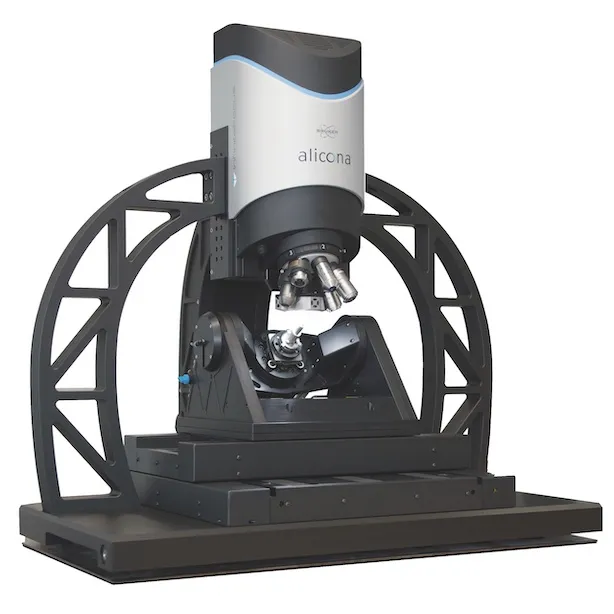
and roughness (Image: Bruker Alicona)
Hemli says, “A digital twin is nice for digitalization and can be important for reporting, but often the operator just wants to know if the dimensions of a part are OK. You don’t need to use a digital twin for that, you need measurement data. What’s most important is the quality of
the measurement.”
Can we achieve zero physical testing?
Most aircraft manufacturers are now committed to developing zero emissions aircraft. But Guy Johns, chief technologist from UK-based modeling and simulation company CFMS, believes test engineers should consider another goal – zero physical testing.
“Cast your mind forwards into the future, when you are building digital representations for test and you are essentially capturing knowledge at the same time,” he says. “That knowledge currently resides in experts who go through training programs. Furthermore that training is mostly based on what we did in the past.
“So what happens if you got to a state of zero physical test?
“And taking it further with robotic testing and more autonomous testing. Could you take the person out of the loop entirely?”
The right way to digitally twin
Aziz Tahiri, vice president of global aerospace and defence at Hexagon recommends three steps when starting to digitize. The first is to make key decisions on what you are going to record, and how you are going to extract value from it early. Then consider the scale of the digital twin – theoretically it can contain all the real world data about a part, but does it need to?
“You need to know where what I call your hot points are. This is normally somewhere you are losing money or it could be building on the core expertise of your company – a capability which enables you to make lots of money but isn’t,” says Tahiri.
Hot points might be drilling and rifting processes at an OEM. Or for a part manufacturer it might be machining. Potential issues could be lots of non-conforming parts and wastage, or injuries on the shop floor.
“The second step is to talk to the people on the shopfloor,” says Tahiri. “They know better than anyone what is happening right and what is happening wrong and why. These clues will give you an idea about where to digitize.”
The third step is to consider where you are going to store the data, on site or in the cloud is the key decision and one which is very much a personal or corporate decision.


